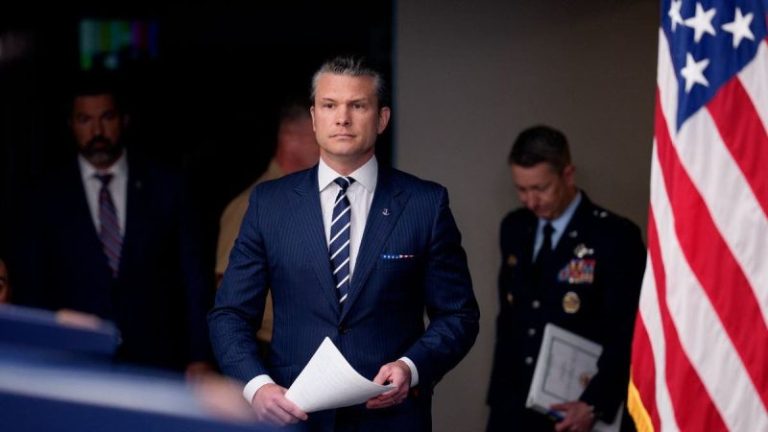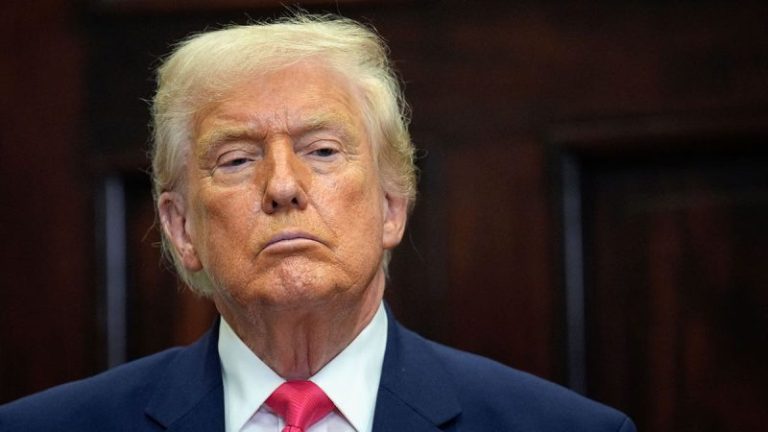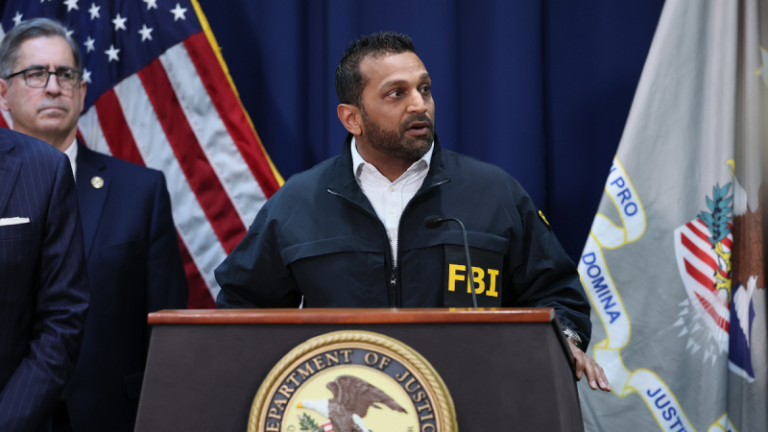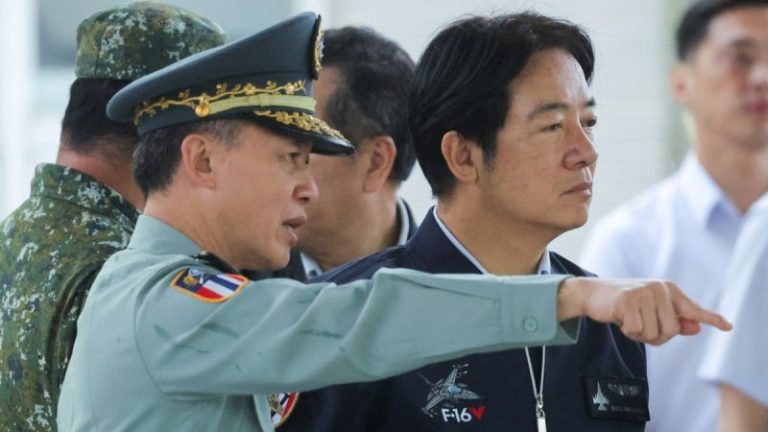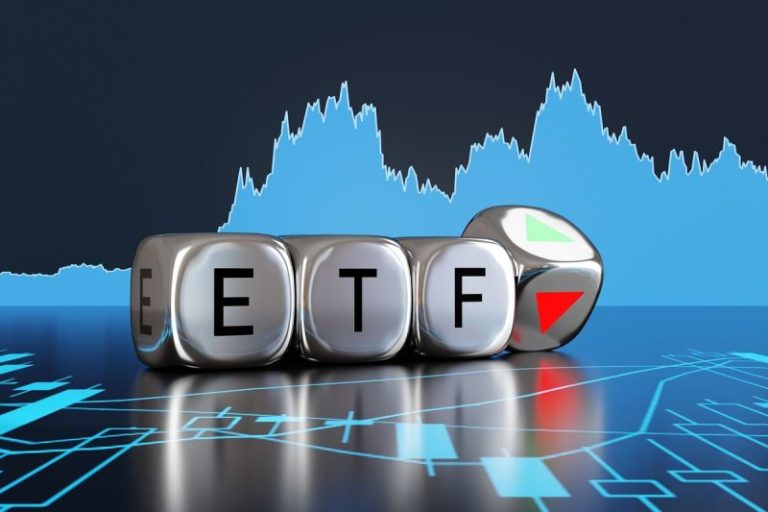Group Eleven Resources Corp. (TSXV: ZNG,OTC:GRLVF) (OTCQB: GRLVF) (FSE: 3GE) (‘Group Eleven’ or the ‘Company’) is pleased to announce the latest two step-out drill holes from its Ballywire discovery (‘Ballywire’) at the 100%-owned PG West Project (‘PG West’), Republic of Ireland.
Highlights:
- 25-3552-47 (approx. 100m step-out SSE of 25-3552-40, initial test of the Deeper Cu-Ag target; announced 22-Sep-25) intersected four zones of mineralization, including:
- New Mineralized Zone (South) – Waulsortian Hosted (starting from 313.1m downhole)
- 20.3m of 2.6% Zn+Pb (1.5% Zn and 1.1% Pb), 6 g/t Ag, including
- 7.3m of 5.2% Zn+Pb (2.5% Zn and 2.7% Pb), 10 g/t Ag, including
- 3.8m of 7.3% Zn+Pb (3.7% Zn and 3.6% Pb), 14 g/t Ag, including
- 1.9m of 10.7% Zn+Pb (5.7% Zn and 5.0% Pb), 19 g/t Ag
- New Mineralized Zone (South) – Base of Waulsortian (starting from 355.9m downhole)
- 2.6m of 2.7% Zn+Pb (0.1% Zn and 2.5% Pb) and 19 g/t Ag, including
- 0.8m of 6.7% Zn+Pb (0.3% Zn and 6.5% Pb) and 37 g/t Ag
- Deeper Cu-Ag Zone (starting from 490.7m downhole)
- 11.3m of 0.26% Cu and 8 g/t Ag, including
- 4.7m of 0.46% Cu and 14 g/t Ag, including
- 1.8m of 0.83% Cu and 24 g/t Ag
- Deeper Cu-Ag Zone (starting from 616.6m downhole)
- 9.4m of 0.25% Cu and 7 g/t Ag, including
- 3.7m of 0.32% Cu and 8 g/t Ag, including
- 0.8m of 0.62% Cu and 16 g/t Ag
‘Today’s results represent a positive surprise given we were not expecting robust Zn-Pb-Ag mineralization south of the main discovery trend at this particular location,’ stated Bart Jaworski, CEO. ‘In addition to successfully extending significant Deeper Cu-Ag mineralization down dip by over 200m from previous drilling, today’s hole intersected strong Zn-Pb-Ag mineralization in a new part of the discovery. Long theorized, new zones of mineralization parallel to the main discovery trend at Ballywire were evidenced this September by hole 25-3552-44 which discovered a new Cu-Ag bearing feeder structure to the north of the main discovery. Today’s results show a similar situation, but to the south, enhancing the potential for at least two additional mineralized zones. If borne out, this greatly expands Ballywire’s tonnage potential.’
‘Driven by new zones of mineralization, growing momentum at our Deeper Cu-Ag zone and the fact that the majority of our 6km long prospective trend is yet to be drilled, Ballywire’s exploration upside continues to ramp up. With a robust treasury and our most ambitious drilling campaign to date – four rigs turning in Ireland – we are poised to continue unlocking Ballywire’s full potential over the coming months.’
Exhibit 1. Cross-Section Showing 25-3552-47 Testing Deeper Cu-Ag Zone at Ballywire.
To view an enhanced version of this graphic, please visit:
https://images.newsfilecorp.com/files/5685/276566_d7aa5ace04d3b85a_002full.jpg
Note: True thickness of the mineralized intervals in hole 25-3552-47 as a percentage of the down-hole interval, is estimated to be approx. 90-100% for Waulsortian-hosted zones, and 60-80% for sub-Waulsortian zones.
Exhibit 2. Plan Map of Main Ballywire Discovery Corridor, Showing New Holes 25-3552-45 and -47.
To view an enhanced version of this graphic, please visit:
https://images.newsfilecorp.com/files/5685/276566_d7aa5ace04d3b85a_003full.jpg
Note: ‘New Min’zd Zone (S)’ means New Mineralized Zone (South); ‘Potential Zone (N)’ means Potential Mineralized Zone (North).
Exhibit 3. Cross-Section of 25-3552-45 (and Previously Reported Holes -35 and -39).
To view an enhanced version of this graphic, please visit:
https://images.newsfilecorp.com/files/5685/276566_d7aa5ace04d3b85a_004full.jpg
Note: True thickness of the mineralized intervals in hole 25-3552-45 as a percentage of the down-hole interval, is estimated to be approx. 80-100%.
Ballywire Drill Update
The Ballywire prospect at the Company’s 100%-owned PG West Project in Republic of Ireland, represents the most significant mineral discovery in Ireland in over a decade. First announced in Sept-2022, the discovery has 64 holes drilled and reported by Group Eleven to date, including the most recent two holes (25-3552-45 and -47) reported today (see Exhibits 1 to 6).
Assays from today’s drill holes are summarized above and below (and in Exhibits 4 and 5). Mineralization consists predominantly of sphalerite, galena and pyrite, with the Cu-Ag bearing zones also containing chalcopyrite and suspected tennantite-tetrahedrite.
In addition to results from 25-3552-47, described above, hole 25-3552-45 intersected two zones of significant mineralization along a fault structure (see Exhibits 3 and 5). Strong exploration upside remains further to the NNW and SSE along this section.
Exhibit 4. Summary of Assays from 25-3552-47 at Ballywire
| Item |
From
(m) |
To
(m) |
Int
(m) |
Zn
(%) |
Pb
(%) |
Zn+Pb
(%) |
Ag
(g/t) |
Cu
(%) |
| 25-3552-47 |
313.14 |
333.42 |
20.28 |
1.49 |
1.14 |
2.63 |
5.7 |
– |
| Incl. |
313.14 |
319.60 |
6.46 |
1.45 |
0.47 |
1.92 |
5.2 |
– |
| And |
326.11 |
333.42 |
7.31 |
2.51 |
2.65 |
5.16 |
10.1 |
– |
| Incl. |
329.63 |
333.42 |
3.79 |
3.71 |
3.60 |
7.31 |
13.7 |
0.01 |
| Incl. |
330.59 |
332.52 |
1.93 |
5.73 |
5.01 |
10.75 |
18.7 |
0.01 |
| Incl. |
330.59 |
331.56 |
0.97 |
6.45 |
5.39 |
11.84 |
18.7 |
0.01 |
| And |
355.85 |
358.45 |
2.60 |
0.13 |
2.54 |
2.67 |
18.8 |
0.04 |
| Incl. |
356.73 |
357.56 |
0.83 |
0.28 |
6.46 |
6.74 |
36.7 |
0.08 |
| And |
490.74 |
502.02 |
11.28 |
0.01 |
0.01 |
0.02 |
7.5 |
0.26 |
| Incl. |
494.50 |
502.02 |
7.52 |
0.01 |
0.01 |
0.03 |
10.5 |
0.35 |
| Incl. |
497.32 |
502.02 |
4.70 |
0.02 |
0.01 |
0.03 |
13.8 |
0.46 |
| Incl. |
499.22 |
502.02 |
2.80 |
0.02 |
0.01 |
0.03 |
19.1 |
0.67 |
| Incl. |
500.17 |
502.02 |
1.85 |
0.02 |
0.01 |
0.03 |
23.8 |
0.83 |
| And |
616.56 |
625.94 |
9.38 |
0.01 |
– |
0.02 |
6.6 |
0.25 |
| Incl. |
619.52 |
623.26 |
3.74 |
0.01 |
– |
0.02 |
8.5 |
0.32 |
| Incl. |
619.52 |
620.48 |
0.96 |
0.02 |
– |
0.03 |
10.8 |
0.35 |
| And |
622.46 |
623.26 |
0.80 |
0.02 |
– |
0.02 |
16.3 |
0.62 |
Note: True thickness of the mineralized intervals in hole 25-3552-47 as a percentage of the down-hole interval, is estimated to be approx. 90-100% for Waulsortian-hosted zones, and 60-80% for sub-Waulsortian zones; ‘-‘ means less than 0.01% (<100 ppm).
Exhibit 5. Summary of Assays from 25-3552-45 at Ballywire
| Item |
From
(m) |
To
(m) |
Int
(m) |
Zn
(%) |
Pb
(%) |
Zn+Pb
(%) |
Ag
(g/t) |
| 25-3552-45 |
145.37 |
162.47 |
17.10 |
1.75 |
0.17 |
1.91 |
3.0 |
| Incl. |
147.14 |
156.17 |
9.03 |
2.58 |
0.24 |
2.81 |
4.3 |
| Incl. |
147.14 |
151.66 |
4.52 |
2.66 |
0.32 |
2.98 |
5.9 |
| Incl. |
149.00 |
151.66 |
2.66 |
3.12 |
0.36 |
3.48 |
6.9 |
| Incl. |
150.73 |
151.66 |
0.93 |
4.79 |
0.61 |
5.40 |
11.6 |
| And |
153.41 |
156.17 |
2.76 |
3.38 |
0.17 |
3.55 |
3.5 |
| And |
181.49 |
202.40 |
20.91 |
1.41 |
0.63 |
2.04 |
10.0 |
| Incl. |
181.49 |
183.24 |
1.75 |
5.94 |
0.31 |
6.25 |
24.1 |
| Incl. |
181.49 |
182.39 |
0.90 |
8.69 |
0.31 |
9.00 |
32.9 |
| And |
192.27 |
194.97 |
2.70 |
1.50 |
2.68 |
4.18 |
21.6 |
| Incl. |
192.27 |
193.16 |
0.89 |
2.13 |
3.86 |
5.99 |
30.3 |
| And |
201.52 |
202.40 |
0.88 |
7.03 |
2.18 |
9.21 |
32.5 |
| And |
213.38 |
214.35 |
0.97 |
0.12 |
0.74 |
0.86 |
19.4 |
Note: True thickness of the mineralized intervals in hole 25-3552-45 as a percentage of the down-hole interval, is estimated to be approx. 80-100%.
Drilling at Ballywire continues with three rigs. Currently, thirteen (13) new holes are completed or near completed (and in the process of being logged, sampled and assayed). These are shown in Exhibit 2, including: (i) four holes collared approx. 200m E of G11-3552-08; (ii) two holes testing approx. 780m SE of G11-3552-08; (iii) six holes drilled along a drill fence hosting G11-468-01; and (iv) one hole testing approx. 80m SW of G11-3552-12. Note, one additional rig is active at the Company’s Stonepark Project.
Exhibit 6. Regional Gravity Map Showing 6km Long Prospective Trend at Ballywire.
To view an enhanced version of this graphic, please visit:
https://images.newsfilecorp.com/files/5685/276566_d7aa5ace04d3b85a_005full.jpg
Note: Of the four gravity-high anomalies above, only the ‘C’ anomaly has been systematically drilled to date.
Exhibit 7. Regional Map of Ballywire Discovery and Surrounding Prospects.
To view an enhanced version of this graphic, please visit:
https://images.newsfilecorp.com/files/5685/276566_groupe.jpg
Notes to Exhibit 7: (a) Pallas Green MRE is owned by Glencore (see Glencore’s Resources and Reserves Report dated December 31, 2024); (b) Stonepark MRE: see the ‘NI 43-101 Independent Report on the Zinc-Lead Exploration Project at Stonepark, County Limerick, Ireland’, by Gordon, Kelly and van Lente, with an effective date of April 26, 2018, as found on SEDAR+; and (c) the historic estimate at Denison was reported by Westland Exploration Limited in ‘Report on Prospecting Licence 464’ by Dermot Hughes dated May, 1988; the historic estimate at Gortdrum was reported in ‘The Geology and Genesis of the Gortdrum Cu-Ag-Hg Orebody’ by G.M. Steed dated 1986; and the historic estimate at Tullacondra was first reported by Munster Base Metals Ltd in ‘Report on Mallow Property’ by David Wilbur, dated December 1973; and later summarized in ‘Cu-Ag Mineralization at Tullacondra, Mallow, Co. Cork’ by Wilbur and Carter in 1986; the above three historic estimates have not been verified as current mineral resources; none of the key assumptions, parameters and methods used to prepare the historic estimates were reported and no resource categories were used; significant data compilation, re-drilling and data verification may be required by a Qualified Person before the historic estimates can be verified and upgraded to be compliant with current NI 43-101 standards; a Qualified Person has not done sufficient work to classify them as a current mineral resource and the Company is not treating the historic estimates as current mineral resources. ‘Rathdowney Trend’ is the south-westerly projection of the Rathdowney Trend, hosting the historic Lisheen and Galmoy mines.
Qualified Person
Technical information in this news release has been approved by Professor Garth Earls, Eur Geol, P.Geo, FSEG, geological consultant at IGS (International Geoscience Services) Limited, and independent ‘Qualified Person’ as defined under Canadian National Instrument 43-101.
Sampling and Analytical Procedures
All core drilled at Ballywire is NQ (47.6mm) and is cut using a rock saw. Sample intervals vary between 0.22m to 1.19m with an average (over 211 samples) of 0.90m. The half-core samples are bagged, labelled and sealed at Group Eleven’s core store facility in Limerick, Ireland. Selected sample bags are examined by the Qualified Person. Transport is via an accredited courier service and/or by Group Eleven staff to ALS Laboratories in Loughrea Co. Galway, Ireland. Sample preparation at the ALS facility comprises fine crushing 70% < 2mm, riffle splitter, pulverise up to 250g 85% < 75um. Analytical procedures are 34 element four acid ICP-AES (codes ME-ICP61 and ME-OG62). Other than paying for a professional analytical service, Group Eleven has no relationship with ALS.
Quality Assurance/Quality Control (QA/QC) Information
Group Eleven inserts certified reference materials (‘CRMs’ or ‘Standards’) as well as blank material, to its sample stream as part of its industry-standard QA/QC programme. The QC results have been reviewed by the Qualified Person, who is satisfied that all the results are within acceptable parameters. The Qualified Person has validated the sampling and chain of custody protocols used by Group Eleven.
About Group Eleven Resources
Group Eleven Resources Corp. (TSXV: ZNG,OTC:GRLVF) (OTCQB: GRLVF) (FSE: 3GE) is drilling the most significant mineral discovery in the Republic of Ireland in over a decade. The Company announced the Ballywire discovery in September 2022, demonstrating high grades of zinc, lead, silver, copper, germanium and locally, antimony. Key intercepts to date include:
- 10.8m of 10.0% Zn+Pb and 109 g/t Ag (G11-468-03)
- 10.1m of 8.6% Zn+Pb and 46 g/t Ag (G11-468-06)
- 10.5m of 14.7% Zn+Pb, 399 g/t Ag and 0.31% Cu (G11-468-12)
- 11.2m of 8.9% Zn+Pb and 83 g/t Ag (G11-3552-03)
- 29.6m of 10.6% Zn+Pb, 78 g/t Ag and 0.15% Cu (G11-3552-12) and
- 11.8m of 11.6% Zn+Pb, 48 g/t Ag (G11-3552-18)
- 15.6m of 11.6% Zn+Pb, 122 g/t Ag and 0.19% Cu (G11-3552-27)
- 12.0m of 1.4% Zn+Pb, 560 g/t Ag, 2.30% Cu and 0.17% Sb (25-3552-31), including
- 6.4m of 2.1% Zn+Pb, 838 g/t Ag, 3.72% Cu and 0.27% Sb (25-3552-31)
- 39.7m of 9.5% Zn+Pb, 131 g/t Ag and 0.27% Cu (25-3552-35)
- 25.6m of 9.2% Zn+Pb, 28 g/t Ag (25-3552-39)
Ballywire is located 20km from Company’s 77.64%-owned Stonepark zinc-lead deposit1, which itself is located adjacent to Glencore’s Pallas Green zinc-lead deposit2. The Company’s two largest shareholders are Michael Gentile (14.1% interest) and Glencore Canada Corp. (13.9%). Additional information about the Company is available at www.groupelevenresources.com.
ON BEHALF OF THE BOARD OF DIRECTORS,
Bart Jaworski, P.Geo.
Chief Executive Officer
E: b.jaworski@groupelevenresources.com | T: +353-85-833-2463
E: j.lau@groupelevenresources.com | T: 604-781-4915
Neither TSX Venture Exchange nor its Regulation Services Provider (as that term is defined in the policies of the TSX Venture Exchange) accepts responsibility for the adequacy or accuracy of this release.
Cautionary Note Regarding Forward-Looking Information
Technical and scientific information disclosed from neighbouring properties does not necessarily apply to the current project or property being disclosed. This press release contains forward-looking statements within the meaning of applicable securities legislation. Such statements include, without limitation, statements regarding the future results of operations, performance and achievements of the Company, including the timing, content, cost and results of proposed work programs, the discovery and delineation of mineral deposits/resources/ reserves and geological interpretations. Although the Company believes that such statements are reasonable, it can give no assurance that such expectations will prove to be correct. Forward-looking statements are typically identified by words such as: believe, expect, anticipate, intend, estimate, postulate and similar expressions, or are those, which, by their nature, refer to future events. The Company cautions investors that any forward-looking statements by the Company are not guarantees of future results or performance, and that actual results may differ materially from those in forward looking statements as a result of various factors, including, but not limited to, variations in the nature, quality and quantity of any mineral deposits that may be located. All of the Company’s public disclosure filings may be accessed via www.sedarplus.ca and readers are urged to review these materials, including the technical reports filed with respect to the Company’s mineral properties.
1 Stonepark MRE is 5.1 million tonnes of 11.3% Zn+Pb (8.7% Zn and 2.6% Pb), Inferred (Apr-17-2018).
2 Pallas Green MRE is 45.4 million tonnes of 8.4% Zn+Pb (7.2% Zn + 1.2% Pb), Inferred (Glencore, Dec-31-2024).
To view the source version of this press release, please visit https://www.newsfilecorp.com/release/276566

